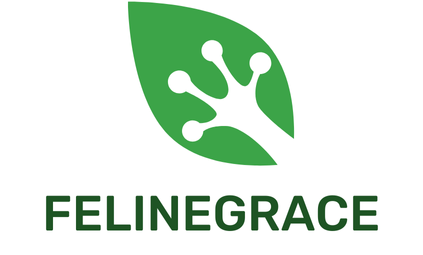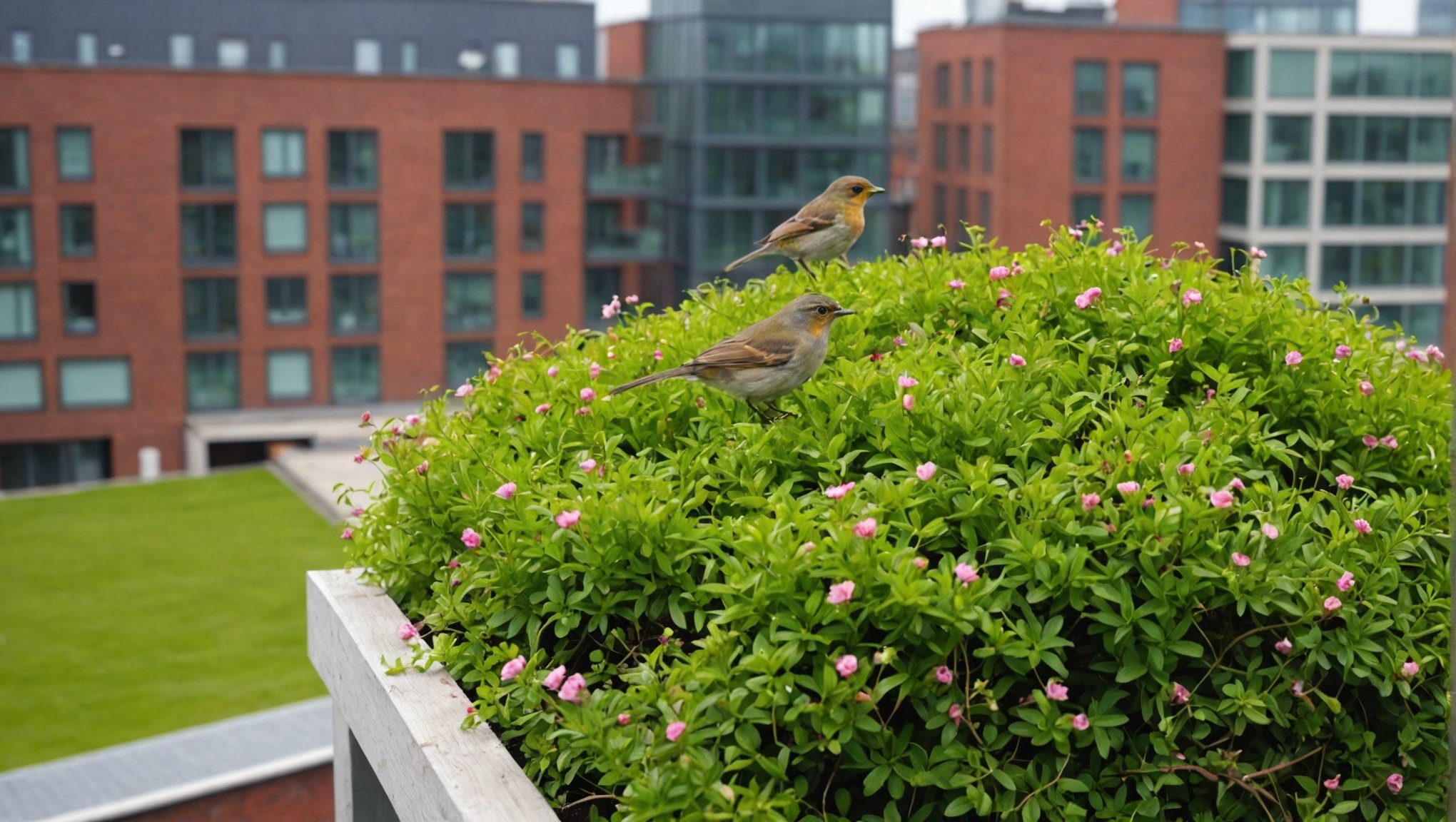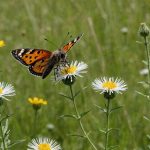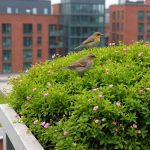In the hustle and bustle of UK cities, the notion of making space for local bird species may seem far-fetched and idealistic. However, one urban design trend is steadily shifting the scales – the installation of green roofs. As sprawling urbanisation engulfs more and more natural habitats, green roofs offer a ray of hope for local bird species seeking a safe haven amidst the concrete jungle. Let’s dive into a detailed exploration of how green roofs are reshaping urban ecology and providing a significant boost to the avian population in UK cities.
Green Roofs: Providing the Essential Green Space
It’s no secret that urban areas, with their endless stretch of buildings and roads, aren’t the most inviting habitats for birds. But the introduction of green roofs can change this scenario.
En parallèle : How does the rewilding of UK’s meadows support insect biodiversity?
Green roofs, also known as living roofs, are essentially rooftops that are covered with a layer of vegetation planted over a waterproofing system. They can be installed on a wide range of buildings, from small residential properties to large industrial complexes. These roofs provide a blend of urban and natural environments, creating an effective green space for birds right in the heart of the city.
Urban bird species often struggle to find suitable nesting sites and foraging areas, but green roofs offer both. They provide a diverse range of plants, insects, and other resources that birds need to survive and thrive in a city setting.
Cela peut vous intéresser : What training is required for UK volunteer wildlife rescuers handling oil spill-affected birds?
A Safe Haven for Nesting
Birds are incredibly resourceful creatures, but urban environments can prove challenging even for the most adaptable species. This is where green roofs come into play.
The vegetation on green roofs, including grass, shrubs, and small trees, provides an ideal nesting habitat for many bird species. It offers them safety from predators and offers a quieter, more secluded environment compared to the rest of the busy city. The complex vegetation structure allows birds to build their nests away from the prying eyes of predators and human disturbance.
Green roofs also provide a microclimate that is conducive to bird nesting. They typically have lower temperatures than their surrounding urban environments, making them more comfortable places for birds to nest during hot summer months. In many ways, green roofs mimic the birds’ natural habitats, offering them a home away from home.
The Foraging Advantage
Green roofs aren’t just beneficial for nesting. They are also a veritable treasure trove when it comes to foraging opportunities.
The plant diversity present in green roofs supports a rich invertebrate community that serves as a valuable food resource for local bird species. From insects to spiders, the variety of prey available is key to attracting a wide range of bird species.
Not only do green roofs offer a wealth of food resources, but they also provide a safer foraging environment for birds. Unlike on the ground level, where they are vulnerable to numerous threats such as traffic, cats, and other predators, birds on green roofs can feed in relative peace.
Encouraging Biodiversity
Green roofs do more than just support existing bird populations. They can also help to increase biodiversity by attracting new bird species not usually seen in urban areas.
With a diverse array of plant species, green roofs act as stepping stones for migrating bird species, providing them with much-needed rest and refuelling stops. They can also help to promote the spread of different species by creating new habitats in areas that might previously have been inhospitable.
Moreover, since green roofs are higher up and away from most human activity, they are less disturbed, which makes them more attractive to bird species that are usually wary of human presence.
Green Roofs: A Sustainable Solution
Green roofs are not just about offering a sanctuary for birds. They also reflect a broader vision of sustainable urban development.
The installation of green roofs offers numerous environmental benefits, including reducing urban heat islands, improving air quality, and reducing stormwater runoff. These advantages make green roofs a win-win solution for both urban dwellers and local bird species.
Given the promising potential of green roofs, it is essential for city planners, architects, and decision-makers to incorporate them into urban landscapes more extensively. By doing so, we can create cities that are not only more sustainable and resilient, but also richer in biodiversity. It’s a step towards a future where urban life and nature coexist, rather than compete.
While the road ahead is long, the example set by green roofs reminds us that even in the most concrete-laden urban environments, there is room for nature to flourish.
The Role of Local Authorities and Residents
Local authorities and residents can play a pivotal role in promoting and supporting the installation of green roofs.
Local authorities can instigate the change by introducing policies and incentives that encourage the installation of green roofs in both new constructions and existing buildings. This could include planning guidelines that require a certain percentage of all new developments to incorporate green roofs, or financial incentives such as tax breaks or subsidies for property owners who install green roofs.
Education and awareness campaigns are also crucial. Local authorities can work with environmental organisations, schools, and community groups to raise awareness about the benefits of green roofs. This would not only help to build public support for green roofs, but also equip the next generation with the knowledge and skills to continue promoting these practices in the future.
Residents, too, have a key role to play. They can lobby their local authorities to implement green roof-friendly policies and can themselves install green roofs on their properties. By doing so, they would be directly contributing to the protection and enhancement of local bird populations in their cities.
Challenges and Opportunities
Despite their numerous benefits, the installation of green roofs also faces several challenges.
The initial cost of installing a green roof can be high, which can be a deterrent for property owners. However, the long-term benefits in terms of energy savings, increased property value, and environmental enhancement can far outweigh the initial expenditure. Moreover, the development of more cost-effective installation techniques and materials could help to reduce these costs in the future.
Maintenance of green roofs can also be a challenge. However, the implementation of proper design and maintenance strategies can ensure the longevity and effectiveness of these roofs.
One of the most promising opportunities lies in the potential for green roofs to contribute to the broader field of urban biodiversity conservation. By acting as stepping stones for migratory birds and providing refuges for local species, green roofs could play a crucial role in preserving urban biodiversity.
Conclusion
In conclusion, the installation of green roofs in UK cities can significantly benefit local bird species. These roofs provide much-needed green space in the heart of urban environments, offering safe havens for nesting, abundant foraging opportunities, and a means to encourage biodiversity.
While there are challenges to the widespread installation of these roofs, the long-term ecological benefits and the potential for sustainable urban development make green roofs a promising solution. The role of local authorities and residents is crucial in promoting and supporting the installation of these roofs.
As we strive towards more sustainable and resilient cities, the integration of green roofs into our urban landscapes is a step in the right direction. It’s not just about coexisting with nature, but actively creating spaces where nature can thrive amidst the urban jungle. The birds chirping on our rooftops could very well be the sweetest symphony of this urban-nature harmony.
















